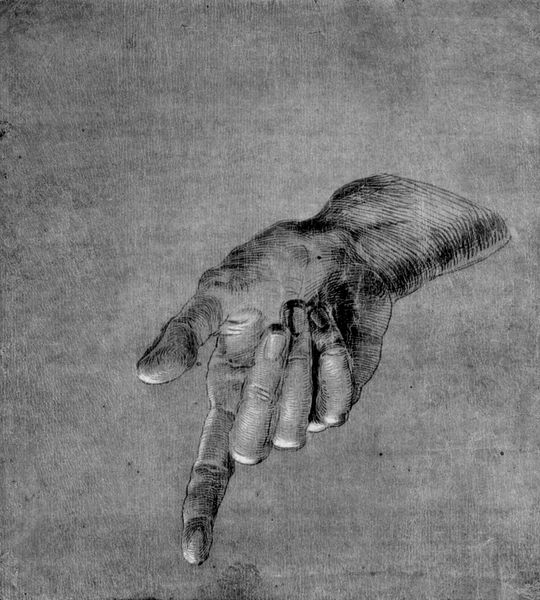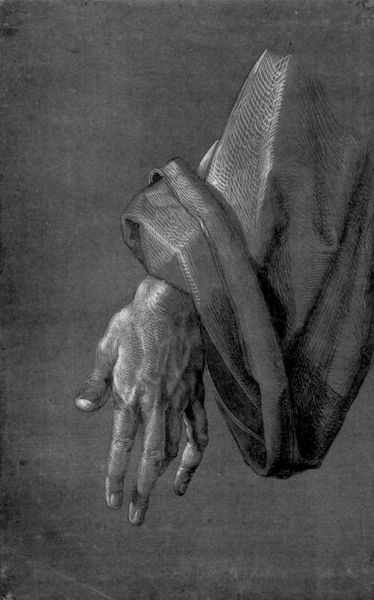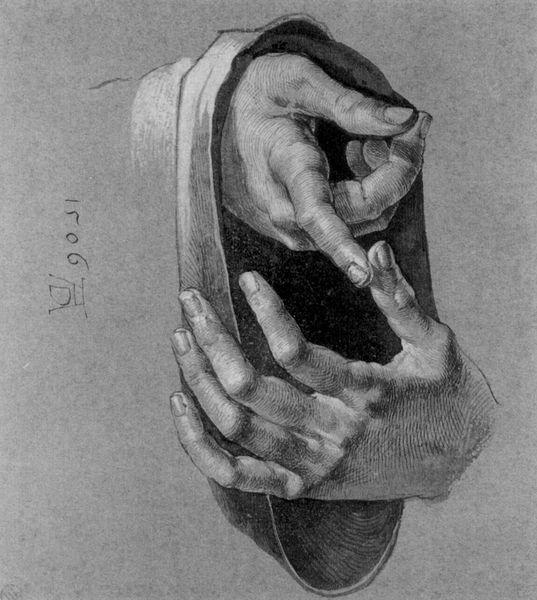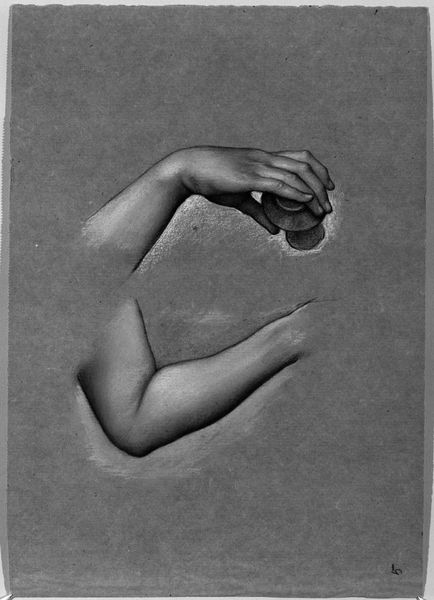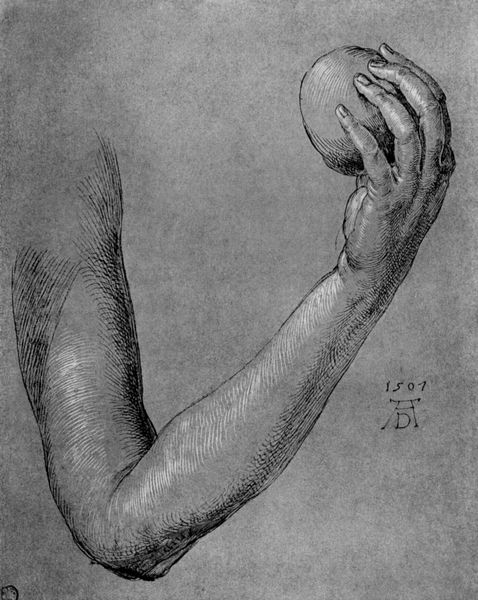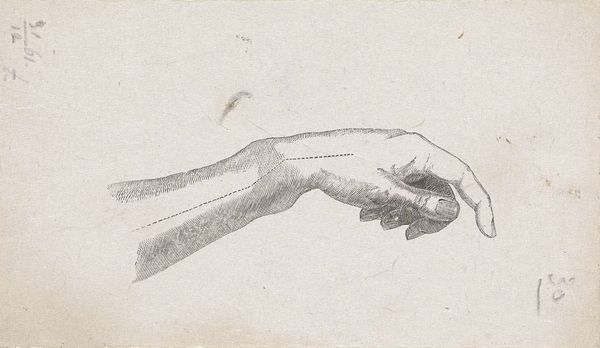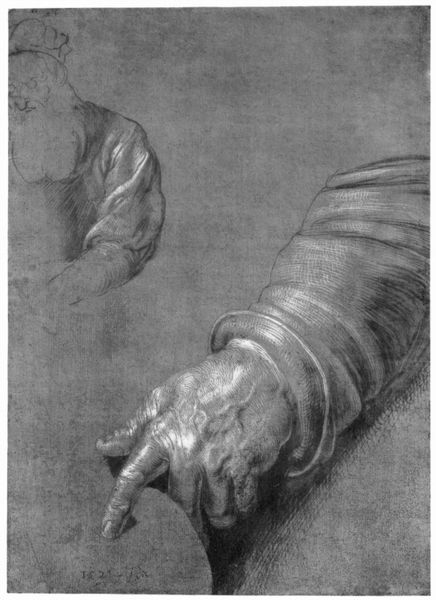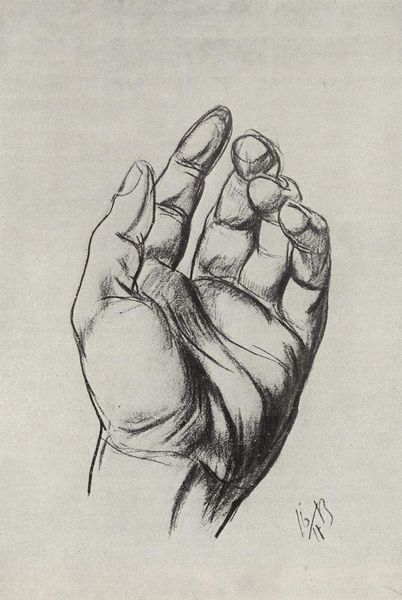
drawing, photography, charcoal
#
portrait
#
drawing
#
charcoal drawing
#
figuration
#
charcoal art
#
photography
#
portrait reference
#
charcoal
#
northern-renaissance
#
charcoal
Copyright: Public domain
Albrecht Durer made this drawing of the Hand of God the Father around 1508, using black ink on paper. Durer was a master of printmaking, and this drawing shows his meticulous attention to line and detail. Look closely, and you will notice the complex network of hatching and cross-hatching that creates the illusion of volume and texture. The ink, applied with a fine-tipped pen, allows for incredibly precise mark-making. This level of detail speaks to the skilled labor involved in creating the artwork. The repetitive, controlled strokes required hours of focused work. But beyond the technical skill, the drawing also carries social significance. In Durer's time, the printing press was a relatively new technology. His prints were widely circulated, making art more accessible to a broader audience. This challenged traditional hierarchies, where art was only available to the wealthy elite. So, when we look at this drawing, we're not just seeing a beautiful image, we're also seeing the intersection of labor, technology, and social change. It reminds us that art is always shaped by the materials, processes, and cultural context in which it is made.
Comments
No comments
Be the first to comment and join the conversation on the ultimate creative platform.
